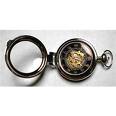The Victorian and Edwardian eras shared very many similarities. Since the end of the Victorian era ended in 1901 and the Edwardian era officially was from 1901 1910 there was little change offered by the Edwardian era. Generally, though, the Edwardian period often extends passed the Great War (World War I).



Victorian & Edwardian similarities and differences
One of the biggest similarities was the differences in social classes. If nothing else, it had grown even firmer within the Edwardian era. The upper class had plenty of money because capitalism was hard at work. However, the poor were extremely poor with low pay. Slowly, however, companies were beginning to pay some of their employees slightly more. Still, though, there were long working hours and poor working conditions.
Fashion and clothing did change
Few things changed, but probably the biggest was fashion. Throughout the majority of the Victorian era, there was little tolerance for comfortable clothing. A lot of the time the men and women alike were dressed up. It was probably extremely uncomfortable.
However, by the time the Edwardian era came around, the upper class greatly enjoyed lavish vacations and leisure sports. During these times, it was more popular to have forms of more comfortable clothing, although for women this was typically still some type of dress. For men, it would be suspenders and tie, but no jacket. The top hats were still popular. The rich really did enjoy their lifestyles much more than the rich did in the past.
As most know, this was the beginning of something new when it came to science and technology. Within the Edwardian era, this was a great time in which Albert Einstein, the Wright Brothers, and Ernest Rutherford were all at work making some of the inventions we still use today.
You may have never heard of Ernest Rutherford, but he is pretty much the father of the modern radio. By the end of the era, automobiles were not so uncommon, lavish ships such as the Titanic were available, and someone had now set foot on the South Pole.